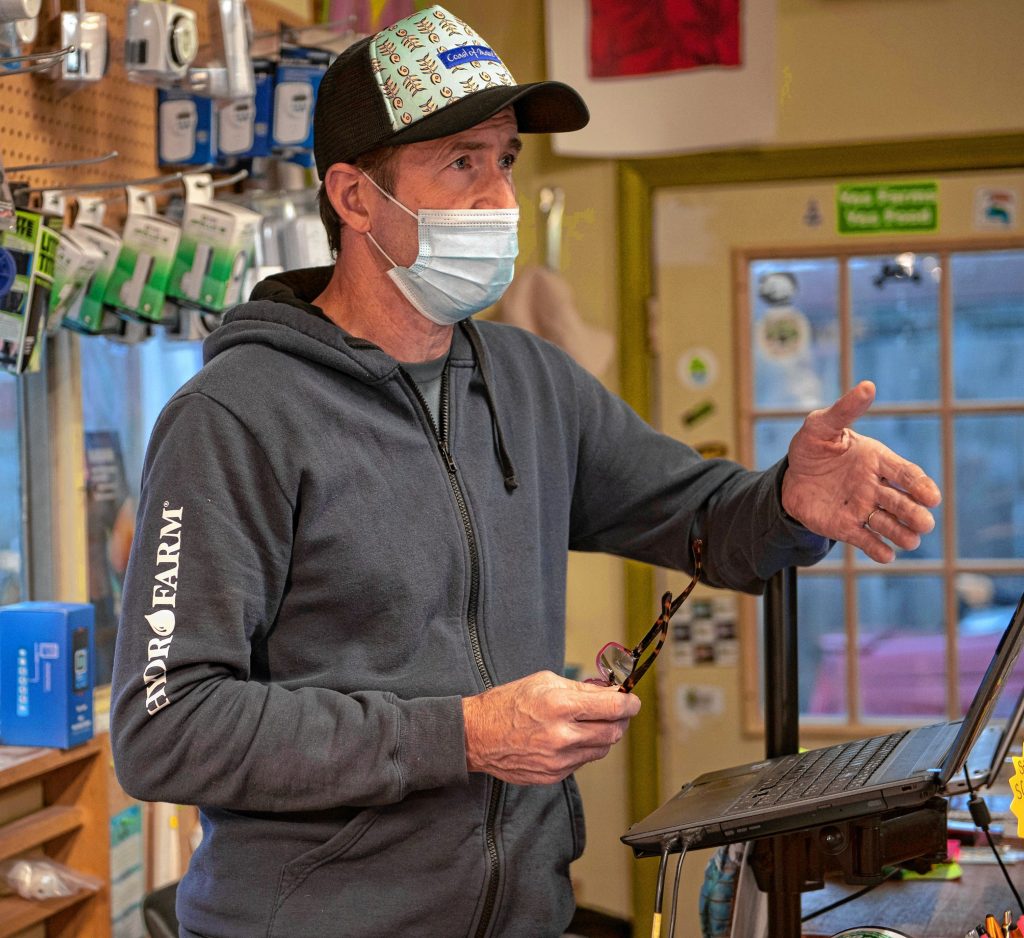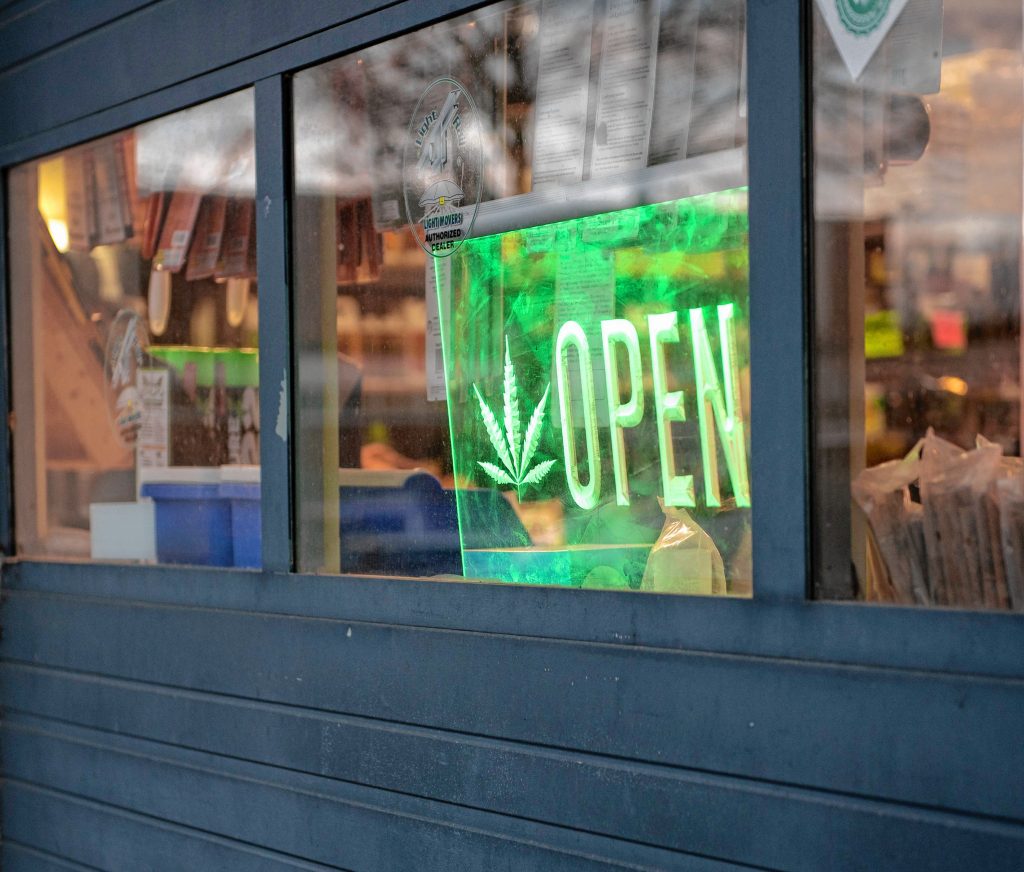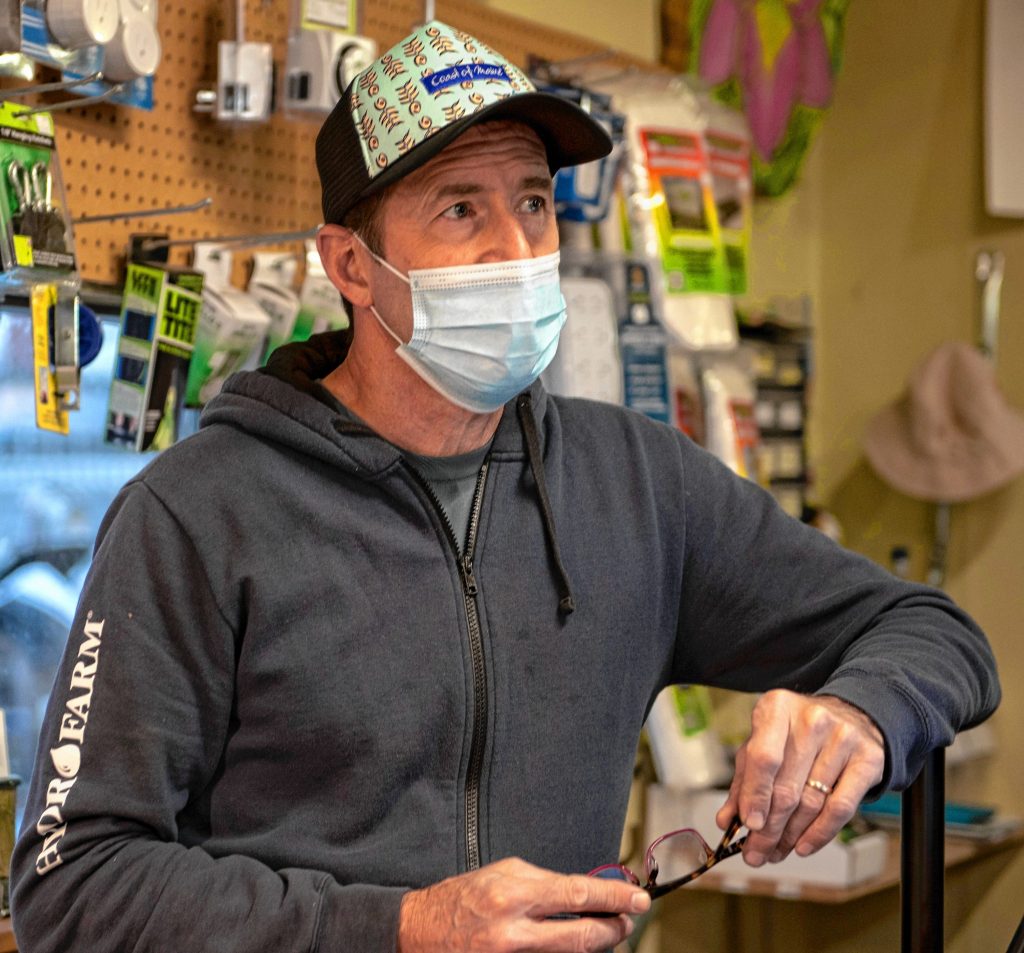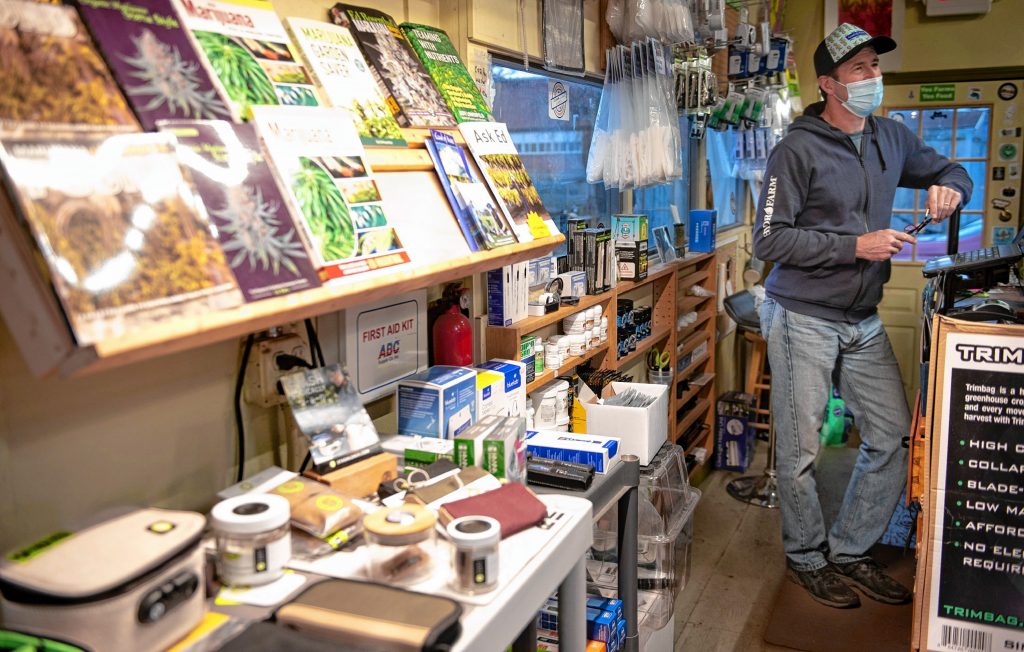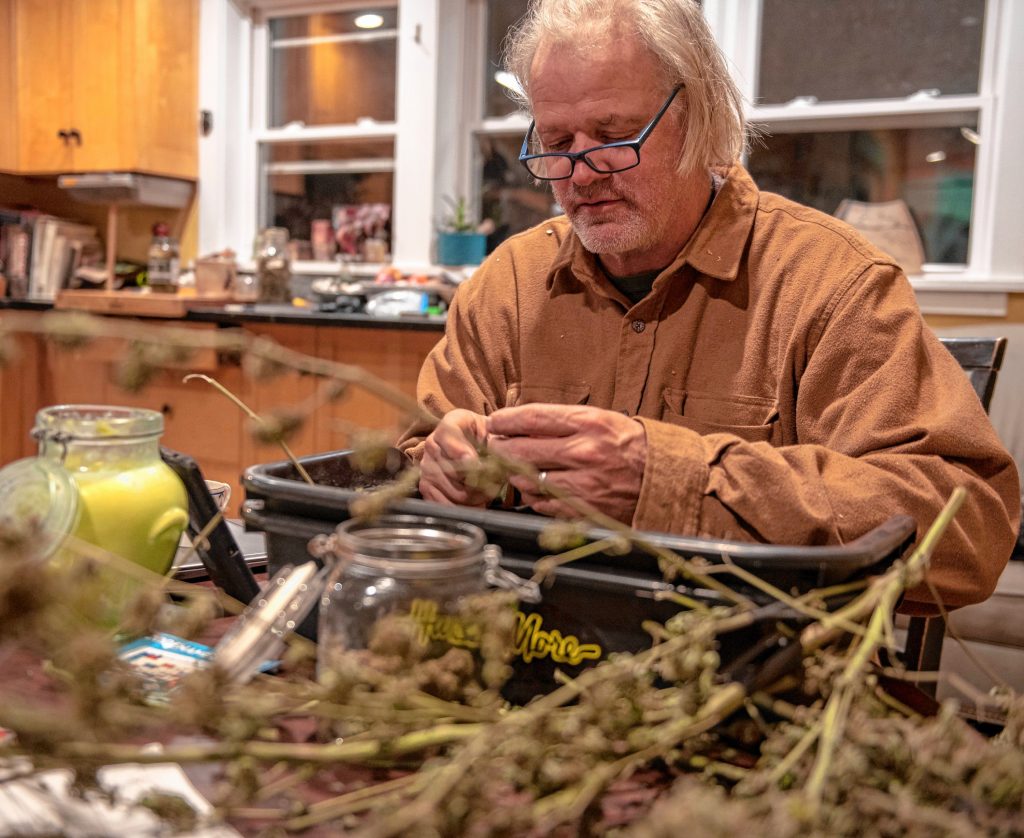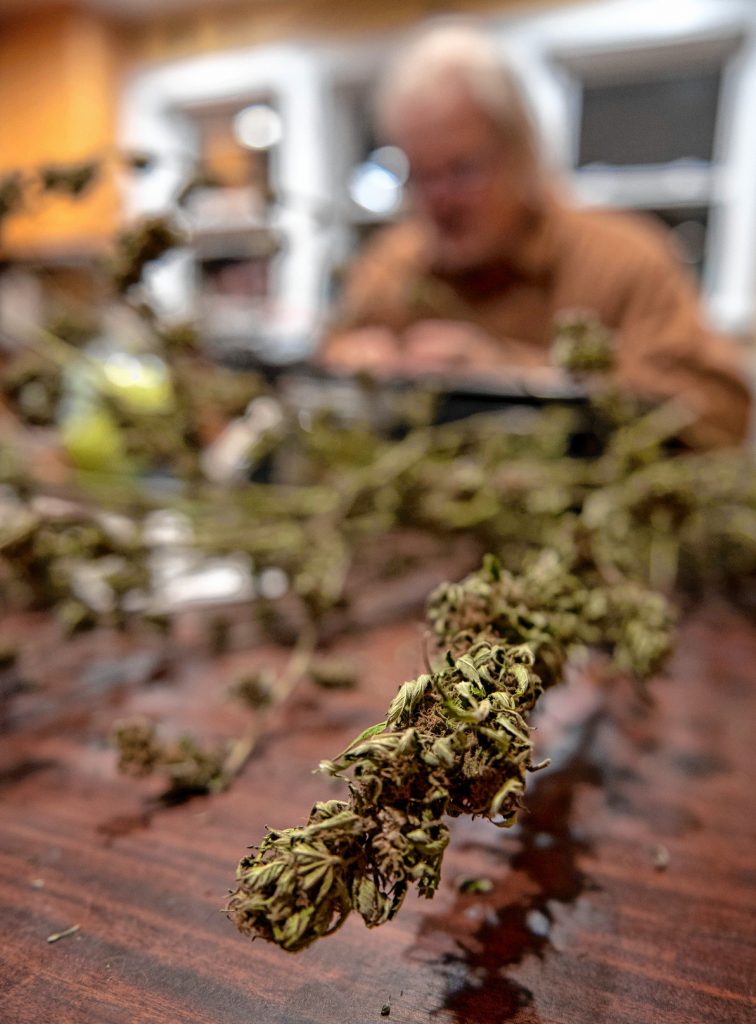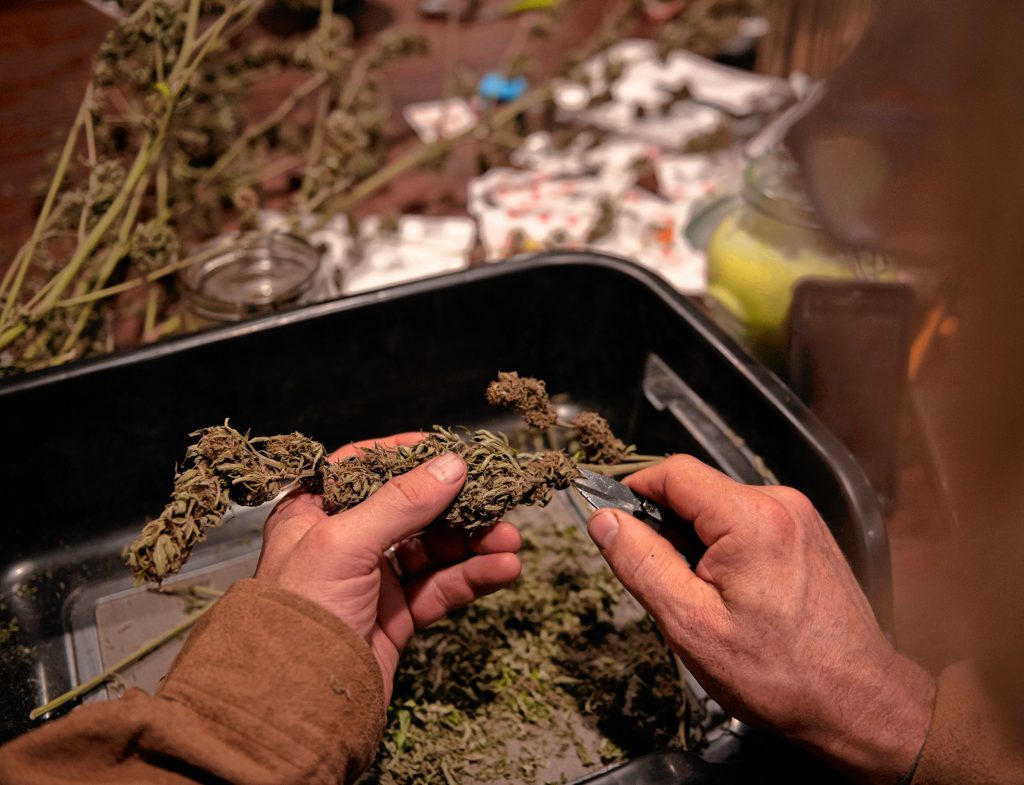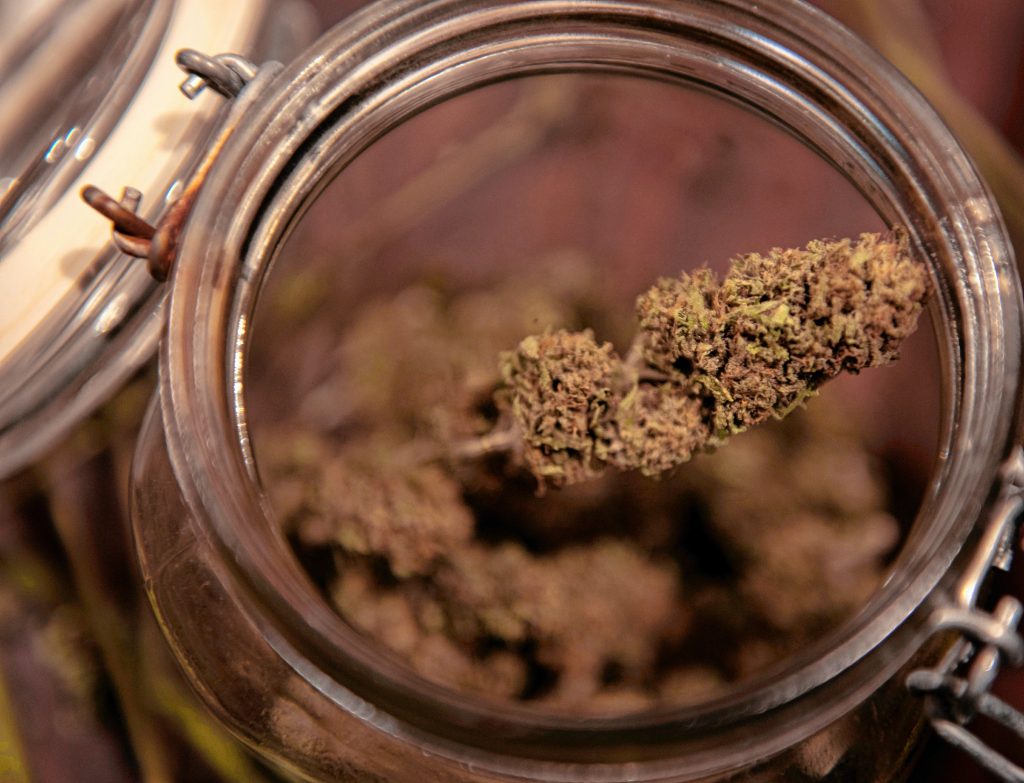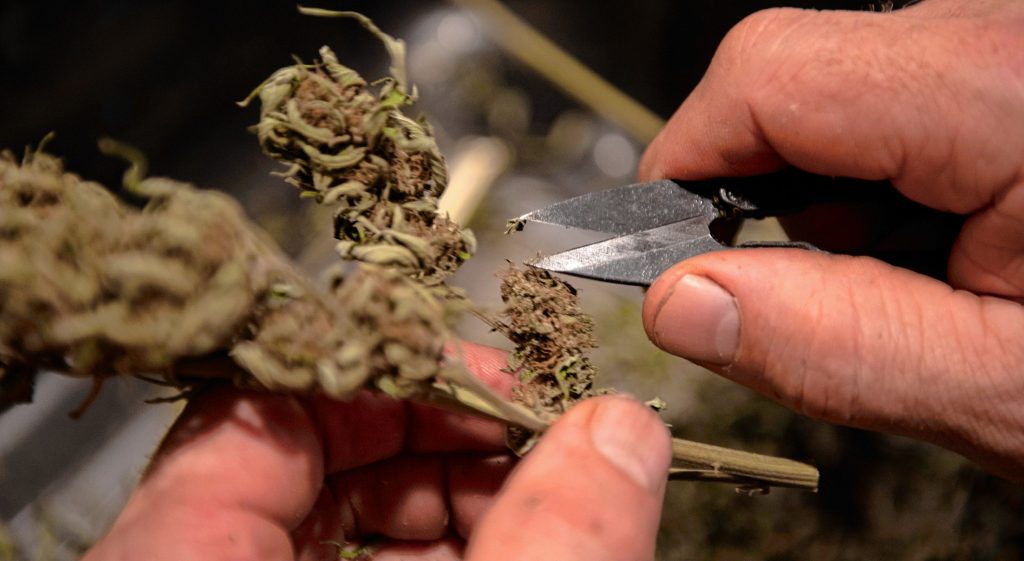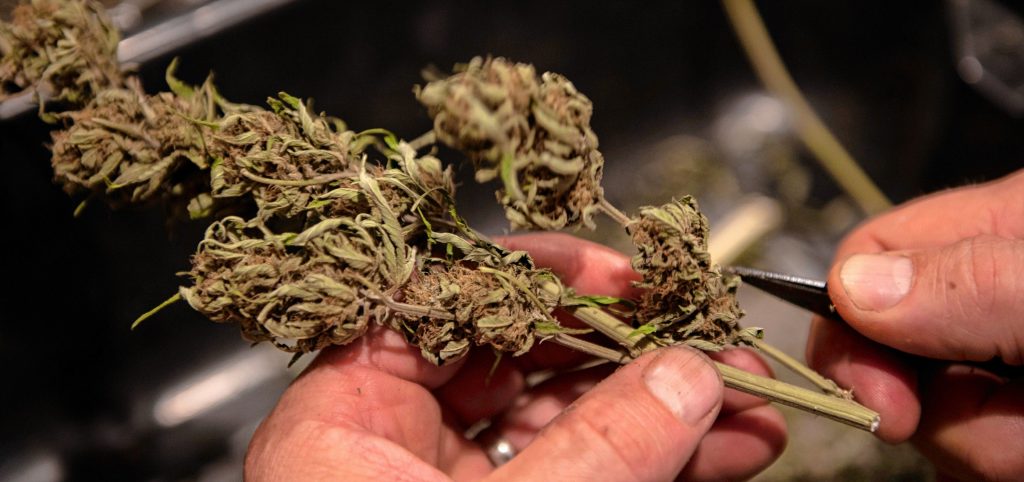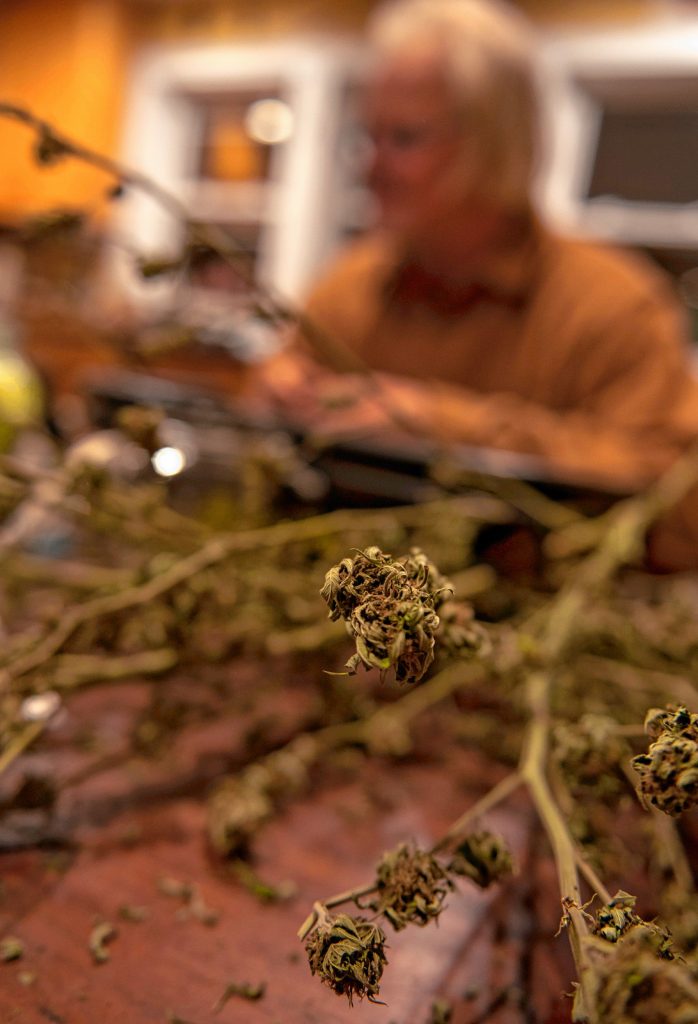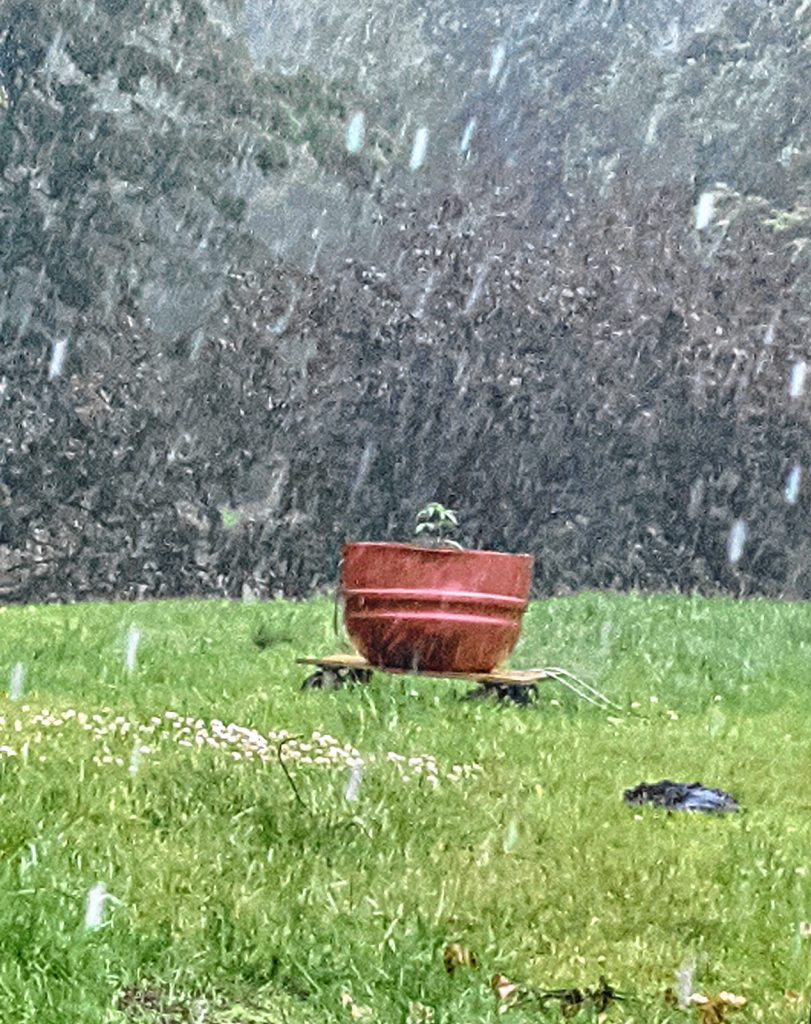If things smell a bit skunky in the neighborhood, don’t automatically point the figure at those nocturnal creatures. That odor may be emanating from cannabis plants that have cropped up, so to speak, at homes throughout the Pioneer Valley.
It’s been four years since Massachusetts legalized marijuana, and in that time many people across the region have taken on the hobby of growing cannabis. Gardeners are fascinated with the growing process; and developing a “pot thumb” can help people that use marijuana on a regular basis for medical or recreational purposes save the expense of buying the project at a retail store.
But things aren’t all rosy for these backyard marijuana growers, many of whom would not speak about their efforts for this story because of the stigmatizim that’s still attached to the once illegal drug. Societal perceptions of home cultivation have far from faded into the background, they say.
“We absolutely assist (customers) now who are interested in growing marijuana,” says Arlo Butler, a manager at the New England Hydroponics in Southampton. “But up until a few years ago, most places wouldn’t acknowledge if you were trying to grow (marijuana.) It was extremely secretive and most of the information that people learned were through hushed conversations in back rooms.”
That secrecy remains to this day, even as cannabis becomes more widely integrated into society. It is particularly prevalent within the communities that grow marijuana in their homes, say people interviewed for this story who refused to give their names.
Doug Andrews, the owner of Here We Grow, a hydroponics store in Hadley, elaborated that many people are hesitant to openly admit to growing marijuana for reasons ranging from being judged by colleagues to concern about theft because of the value of their plants and the pot they produce. Each plant can produce from a quarter of an ounce to a pound, which at local dispensaries sell for between $100 and $300.
The stigmatization of cannabis is one that is rooted in its history. Many people still see it as a “gateway drug” and one that only hippies and under-achievers use. But the natural benefits of cannabis are ones that now appeal to a wide demographic for its variety of benefits.
The rules
The Cannabis Control Commission of Massachusetts states that similar to using marijuana, a home cultivator must be at least 21 years old and that each adult member of the household may grow up to six plants — with 12 being the maximum amount per household.
Matt, a first-time marijuana grower who has requested anonymity due to the sensitivity of the subject, explains that growing cannabis has become the equivalent to currency in his life.
“When I (successfully) started growing it, I realized I can use (the cannabis) to return favors. … I have more mason jars full than I know what to do with, so I enjoy giving it to people that I know will use it,” says Matt, noting that he doesn’t use the pot he grows.
The Cummington resident primarily took on the project because he was curious to see if he could grow it.
“I’ve attempted to grow marijuana a number of times, but it was generally hit or miss,” he says. “A couple of years ago, I planted clones, which are just branches cut off from a marijuana plant, stuck it in the ground, and it is (supposed to) turn into a marijuana plant of its own.”
He had not tried to grow it seriously that time, so nothing really came of it.
This spring, when Matt had a little extra time on his hands due to the pandemic, he decided to try again. But this time, properly, starting from seeds.
Obtaining cannabis seeds in this area has become a feat for growers. Hydroponic stores don’t sell the seeds due to legalization technicalities. Butler, of New England Hydroponics, says, “There is (currently) no legal platform where it details ‘yes, you can’ or ‘no, you cannot’ retail the seeds.” Thus, stores err on the side of caution.
Matt ended up buying Sativa cannabis seeds online through a retailer in California. He is an active man, and the Sativa strain is known to boost energy.
He also notes that people should buy female seeds.
“The males will germinate the female plants, but the flower that you’re looking to end up with — the end product — will just be loaded with seeds and that’s something you don’t want. … A single, male plant can essentially contaminate the entire crop,” Matt says.
Matt planted the seeds in a pallet containing peat moss cells and placed them in a sunny windowsill, where before long they began to sprout. He recalls being excited and thinking, “Hey, it’s working,” when first seeing the sprout’s heads pop up. Then, when they started growing rapidly he had to transfer them into pots where he kept them inside for a while so that they wouldn’t get killed in the early spring frost. Once he put them outside, he began moving the pots to different areas of his yard in search of the perfect sunlight.
Once the plants root themselves they actually become hearty and fairly easy to maintain. The plants can grow to be over 6-feet tall following basic gardening principles, he says.
Father-son unite
Sam Taylor, 55, of Westhampton, began growing cannabis as a fun project to do with his eldest son in the summer of 2019. But unlike Matt, he used plants that were already started instead of starting from scratch with seeds. His son had taken several botany classes throughout his college career, therefore, they both invested in trying different gardening and composting methods to help their cannabis plants to prosper.
“Your success is based on the health of your soil. The first year we got all of these store-bought additives and taking time to prepare the area to make sure that we had healthy soil to start with — essentially figuring out what is missing in the soil,” Taylor says. “So we went out and bought worm-casings, manure and compost. … We learned a lot about it the first year, so the second year we were keeping in mind what can we do this year that we didn’t do last year.”
Cannabis plants love sun and air movement. Many people who choose to grow indoors often use a fan to mimic the circulation of air outside and to destratify it. The choice to grow indoors versus outdoors can hinge on how much land a person has and whether they can tolerate the pungent odor of it inside.
Andrews, the owner of the Here We Grow, explains how the process differs slightly for those who are looking to grow primarily indoors.
“Some people prefer to do an organic super soil, where everything has to be organic, whereas others prefer to grow in hydroponic systems with (big lights) and mineral soil,” he says.
Matt chose to grow his plants outside because he wasn’t fond of its pungent odor. And in choosing this, he elaborates on how this further influenced his choice in seeds, “It is (also) important to get plants that will do better in the northern climate. Because we can get some pretty cold nights here in the summer. You want ones that can sustain a light frost.”
This is crucial because the final buds on the plants are usually harvested from mid-October to November.
Harvest time
Each person has a different method for harvesting the buds on the cannabis plants, which often occurs in stages depending on how much sunlight each part of the plant gets. It also depends on what type of strain the plant is, because they bud in various intervals, according to Taylor’s findings.
But before they can be trimmed, the branches need to dry out in a dark and relatively warm environment. There are special clipping tools that growers can purchase at various hydroponics stores, but baby nail clippers or a pair of really small scissors can work in a pinch to trim the leaves off of the flowers and the buds. Each marijuana plant produces up to dozens of buds, which can equal several ounces up to a pound.
“It is a very time-consuming process,” Matt says.
To harvest and process the buds on his plants, he used fly-fishing scissors. However, the scissors quickly became saturated with the sap from the leaves, rendering them useless. In order to combat this, he soaked the scissors in alcohol, between trimming sessions, creating a tincture solution in the process.
Many people, prior to the pandemic, host cannabis leaf-trimming parties in order to make the workload lighter. “It can be a very social event,” Taylor says.
Matt harvested the final buds off his plants in the middle of October, due to the fluctuation in temperature and concern about a frost killing them.
Taylor finished harvesting the final buds on his plants on Nov. 15 and is looking forward to continuing his crop next year with his sons.
“What’s more fun than doing a project with your kid, that your kid is into and you get to watch this thing grow like crazy,” he says.

